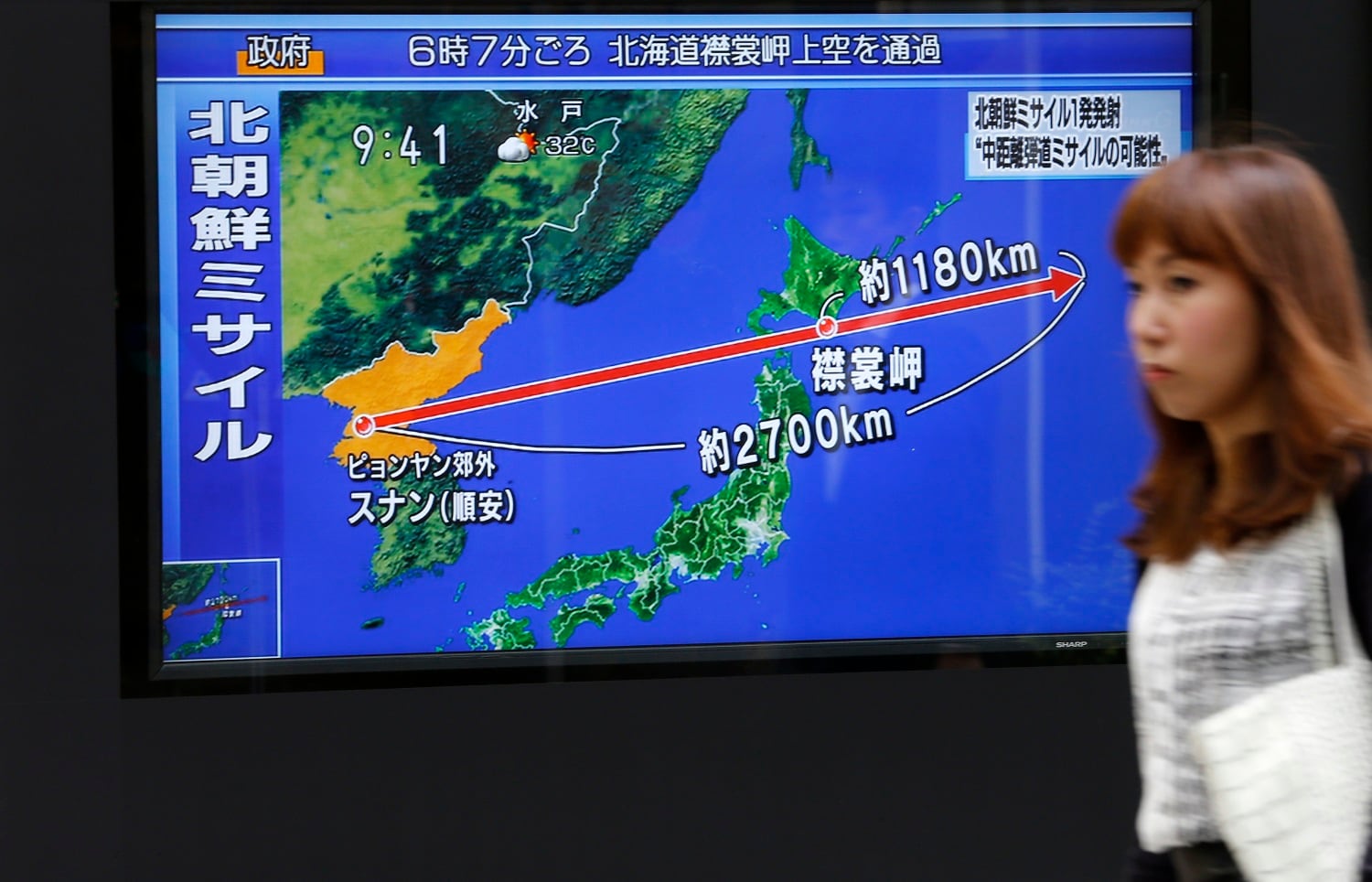MELBOURNE, Australia — Japan’s Ministry of Defense issued a budget request Thursday for 5.26 trillion yen (U.S. $47.67 billion) for the fiscal year starting next April, representing a rise of 2.5 percent in spending over the previous year — the sixth straight annual increase as North Korea continues its ballistic missile development and nuclear weapons programs.
Unsurprisingly, ballistic missile defense features prominently in the budget request, with North Korea having recently carried out ballistic missile tests that included overflight of Japanese airspace. The request confirmed earlier reports that Japan will look at acquiring the Lockheed Martin-made Aegis Ashore ballistic missile defense system, although it did not specifically mention the Raytheon AN/SPY-6 radar currently under development that Reuters reported Japan was seeking.
The request includes $597 million and $181 million respectively to acquire the Raytheon SM-3 Block IB/IIA and PAC-3 Missile Segment Enhancement missiles for ballistic missile defense. The former will be fitted on the Japan Maritime Self-Defense Force’s guided-missile destroyers, which are capable of ballistic missile defense and which Japan plans to increase by two to eight ships in 2021.
Corey Wallace, an Einstein postdoctoral fellow in the Graduate School of East Asian Studies at Freie Universitat in Berlin, Germany, told Defense News that “this budget is probably about cleaning up some loose ends regarding missile defense, with at least four different enhancements will be funded by the increased budget,” and it was driven by North Korea’s provocations in recent years.
However, the budget has also requested a significant allocation for the Japan Maritime Self-Defense Force’s conventional capabilities. It has requested $876 million to build the first two of eight 3,900-ton multimission destroyers — of which Japan has recently selected Mitsubishi Heavy Industries to build — along with an additional 3,000-ton Sōryū-class attack submarine. The budget also calls for $18 million to acquire the Raytheon SM-6 for testing and evaluation purposes.
In the air, the MoD is seeking $801 million for six more Lockheed Martin F-35A Lightning II Joint Strike Fighters; $415 million for four more Bell-Boeing MV-22 Osprey tiltrotors; $251 million for a Boeing KC-46A air-to-air refueling tanker; and $446 million for two more Northrop Grumman E-2D Hawkeye airborne early warning aircraft.
Another noteworthy item on the budget request is the sum of $160 million requested for the development of a “high-speed glide projectile” and an anti-ship guided missile. It is unclear what the former is, but there is speculation of it being some sort of a boost-glide or hypersonic weapon. Both were framed as systems to be used for “island defense” which is usually code for the disputed Senkaku Islands, which are also claimed by China and have been the subject of tension between both countries in the past.
RELATED

The budget request will now head to Japan’s Ministry of Finance for approval. Wallace told Defense News that he does not expect any significant cuts in the budget request given the government of Prime Minister Shinzo Abe is currently considering a new midterm defense plan.
The plan is where “we will see the real long-term direction for Japanese defense come into view, including what it will do about acquiring capabilities that it will need should it want to put in place an ability to strike overseas military targets,” Wallace said.
Japan has previously floated the idea of obtaining strike capabilities as an option of dealing with the North Korean missile threat, with newly appointed Defense Minister Itsunori Onodera having been a key member of the ruling Liberal Democratic Party’s security panel, which proposed Japan be allowed to “strike back” should it be attacked as opposed to just acting to defend itself from an attack.
However, this would represent a radical break with Japan’s pacifist, post-war policy, and raise controversy about whether it would be in violation of Japan’s pacifist constitution, which formally renounces war as a sovereign right of the nation and the threat or use of force as a means of settling international disputes.
Mike Yeo is the Asia correspondent for Defense News.








